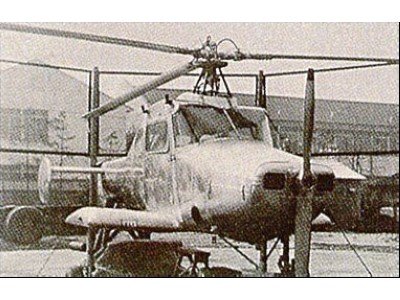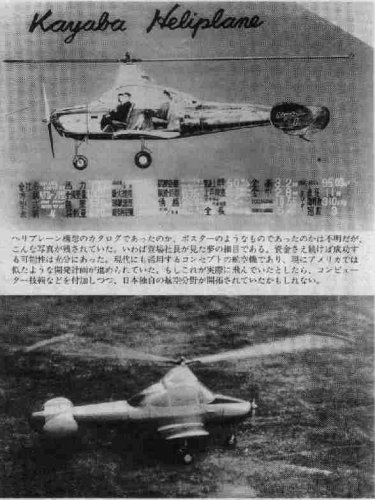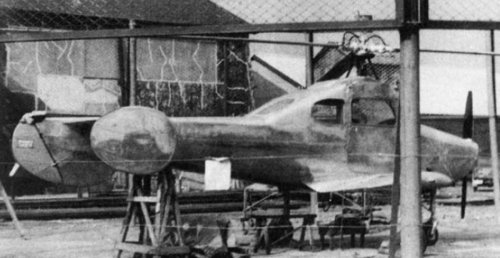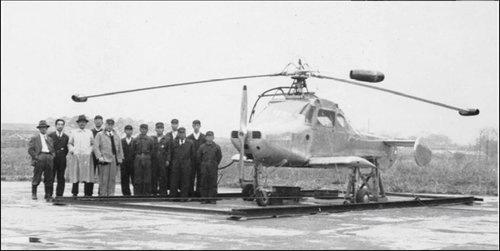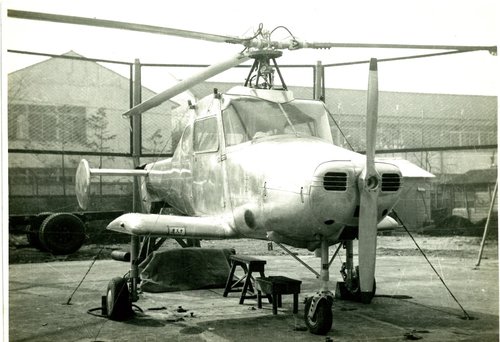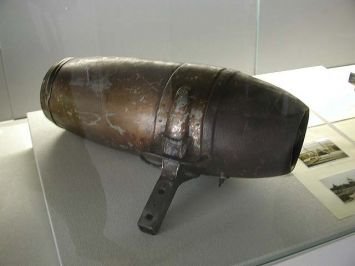- Joined
- 25 June 2009
- Messages
- 14,767
- Reaction score
- 6,207
Until World War II, the Kayaba company manufactured autogiros and aircraft undercarriages in Japan. In 1952, Shiro Kayaba, the founder of the firm, returned to rotary wing experimentation with the Heliplane compound helicopter. He obtained the fuselage of a Cessna 170B and, during the following two years, turned it into quite a presentable convertiplane.
The Kayaba Heliplane was a curious machine, expected to be able to climb vertically and then cruise horizontally under the power of its piston-engine alone. The normal 180 h.p. Continental engine, driving a fixed-pitch airscrew, was retained. The Heliplane's three-blade rotor had a 36 foot-diameter and was mounted above the cabin roof. Each blade of this rotor was driven by a small Ishikawajima ramjet used for takeoff and landing. In horizontal flight, when the Heliplane was being driven by the normal propeller, the rotor would rotate freely. The undercarriage was attached to low-set stub wings.
It is known that tied-down testing took place late in 1954, but no reports exist to indicate that the machine ever flew untethered.
The Kayaba Heliplane was a curious machine, expected to be able to climb vertically and then cruise horizontally under the power of its piston-engine alone. The normal 180 h.p. Continental engine, driving a fixed-pitch airscrew, was retained. The Heliplane's three-blade rotor had a 36 foot-diameter and was mounted above the cabin roof. Each blade of this rotor was driven by a small Ishikawajima ramjet used for takeoff and landing. In horizontal flight, when the Heliplane was being driven by the normal propeller, the rotor would rotate freely. The undercarriage was attached to low-set stub wings.
It is known that tied-down testing took place late in 1954, but no reports exist to indicate that the machine ever flew untethered.

